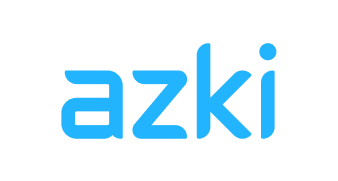About Bajaj Finserv EMI Store
Bajaj Finserv EMI Store (BFES) is the next generation of digital marketplaces that offers easy shopping solutions, making online electronics shopping easier than ever before.
Customers can browse through the online electronics store’s catalog, compare and purchase lifestyle products – gadgets and electronics like smartphones, televisions, air conditioners, etc. and pay for them in installments with easy No Cost EMI schemes. By adopting a hyper-local business model, the platform enables customers to view products from retailers located in their vicinity, tapping into their network of 43,000 merchants across India.
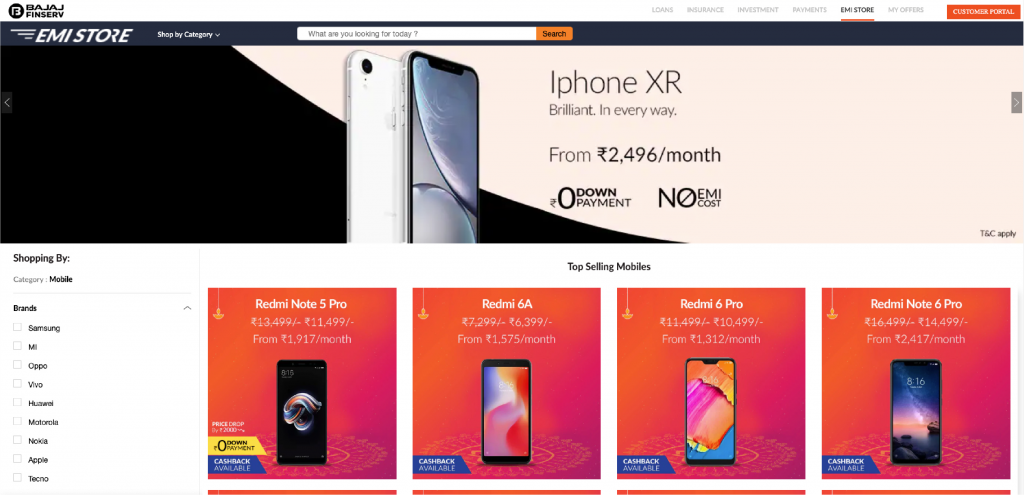
To make a purchase, customers first buy a Bajaj Finserv EMI card that comes with a pre-approved loan amount and can be used for both, online and offline transactions. As a result of the hyper-local model, customers enjoy Bajaj EMI card benefits like 4-hour delivery system, applicable to select products available on the store.
The availability of easy finance options through no-cost EMI options fuelled a wave of economic growth in metros and smaller towns, but posed a unique problem to the marketing team at BFES – the surge of traffic on the website wasn’t leading to a steady rise in conversion and revenue. With such a massive and diverse user base, they needed to work harder to ensure the incoming traffic kept moving towards a purchase.

A Leaky Conversion Funnel
Bajaj Finserv’s conversion funnel showed that a considerable chunk of the incoming traffic never moved beyond the awareness stage. They left without performing significant actions on the website.
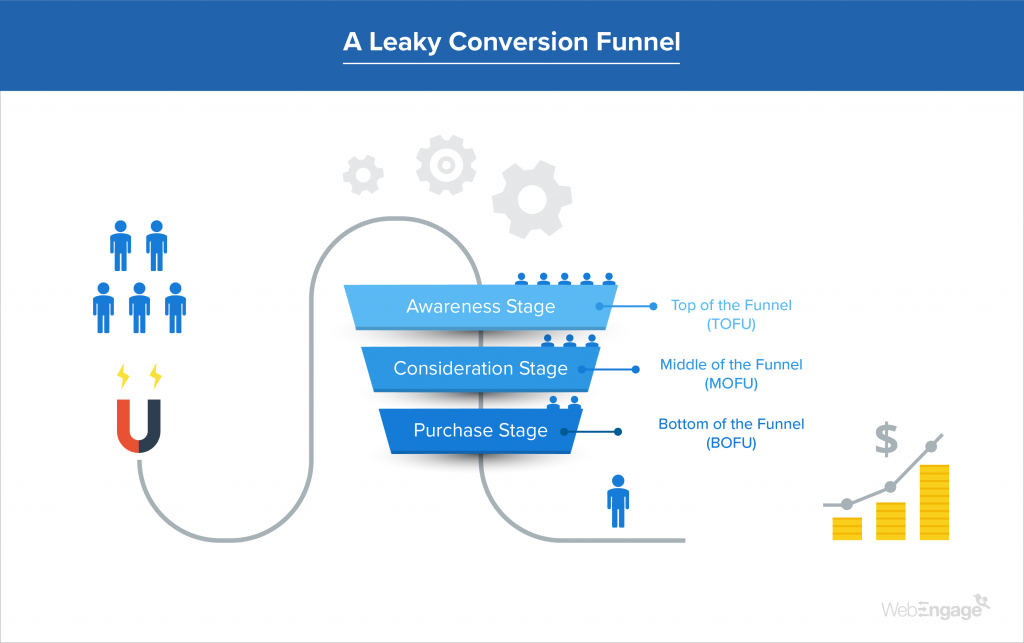
Why were so many drop-offs happening?
The inability to reach out to users at the right time on the right channel with a personalized message led to a lot of users dropping-off the funnel.
- The number of touch-points for the user had increased
- At the same time, user expectations had been constantly evolving
- Competitors had been coming up with more tempting offers for the target audience
The leaks were inevitable. But this meant a massive untapped potential for BFES if they could get some of those drop-offs back on track.
Also read: Conversion funnel optimization for financial services companies [Part-1]
Roadblocks
It was incredibly difficult to scale personalized engagement campaigns for the large user base of 15 million+ users. These were some of the roadblocks that BFES encountered:
- Faceless nature of online platforms
- Inability to pinpoint the source(s) of funnel drop-offs
- Inaccuracy in targeting the right segment so as not to annoy a lot of their current and potential customers
- Unavailability of the right channel(s) to sell to unknown users
Solution
The team at WebEngage offered a customized onboarding-support-success solution and built a detailed project plan that ensured widespread adoption of the dashboard. Here are the steps they took:
Built infrastructure → Analyzed data to pinpoint drop-offs → Created a retargeting ecosystem → Inserted the right plugs → Measured conversion boost
Step #1: Built Infrastructure
The first step to fixing a leaky funnel was to know the source of the leaks. For this, WebEngage built a robust user infrastructure, by capturing every user’s data and tracking their movements across various sessions. As all this data flowed into the database, it created a detailed and in-depth profile of each user on the WebEngage dashboard.
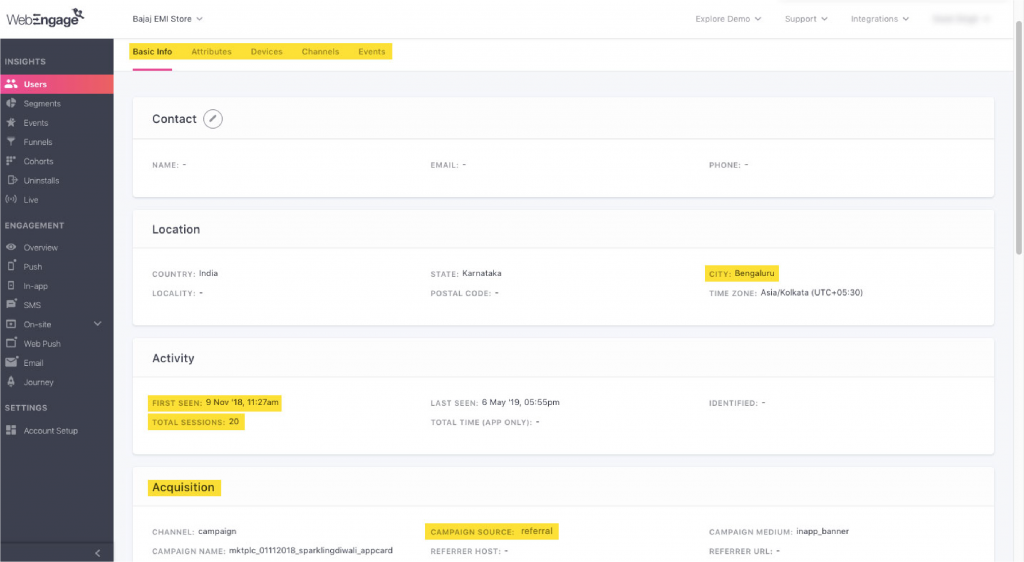
Several user reports were generated to understand the incoming traffic better. One of them was the user acquisition report, that highlighted partner websites and SEM activities that were the top traffic sources.
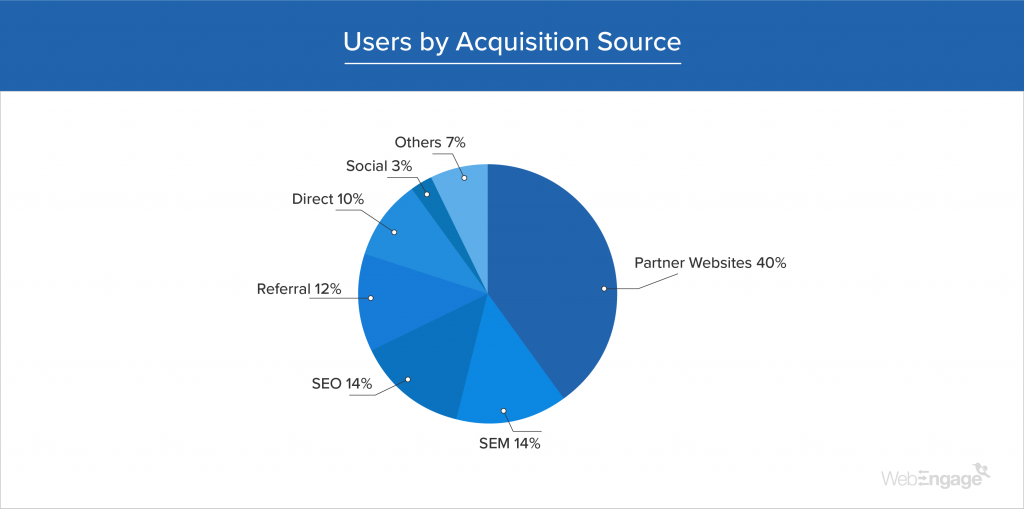
Step #2: Analyzed Data to pinpoint drop-offs
By now, BFES knew which sources had acquired the most number of users. But what they needed was how valuable those users were. That’s when they started splitting users by acquisition source.
BFES created funnels on the dashboard to gauge user behavior and performance of each acquisition source. For example, splitting the New User Funnel by acquisition source and comparing each funnel-step showed which source’s conversion rates lagged behind others.
In addition to conversion rates, each analysis was broken down into the following metrics:
- Number of website visits
- Number of transactions
- Average order value
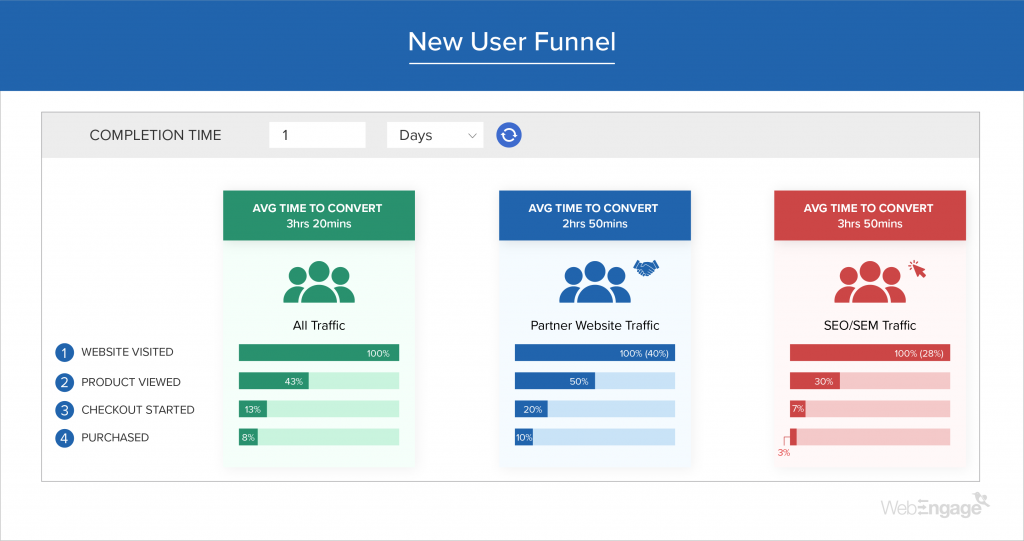
The study showed that users coming from partner websites had a better conversion rate than other sources. Significant drop-offs occurred at the consideration stage for visitors acquired via SEO/SEM activities. This became the major source of the leaks. These users landed on the homepage/product page (awareness stage), browsed the catalog at times and exited without checking out, thereby dropping off from the funnel.
BFES needed a cost-effective way to overcome high drop-offs and maximize marketing ROI.
Find out where you are losing users →
Step #3: Created a Retargeting Ecosystem
Based on the insights discovered so far, the team decided to carve out a retargeting strategy for users acquired by SEO/SEM initiatives.
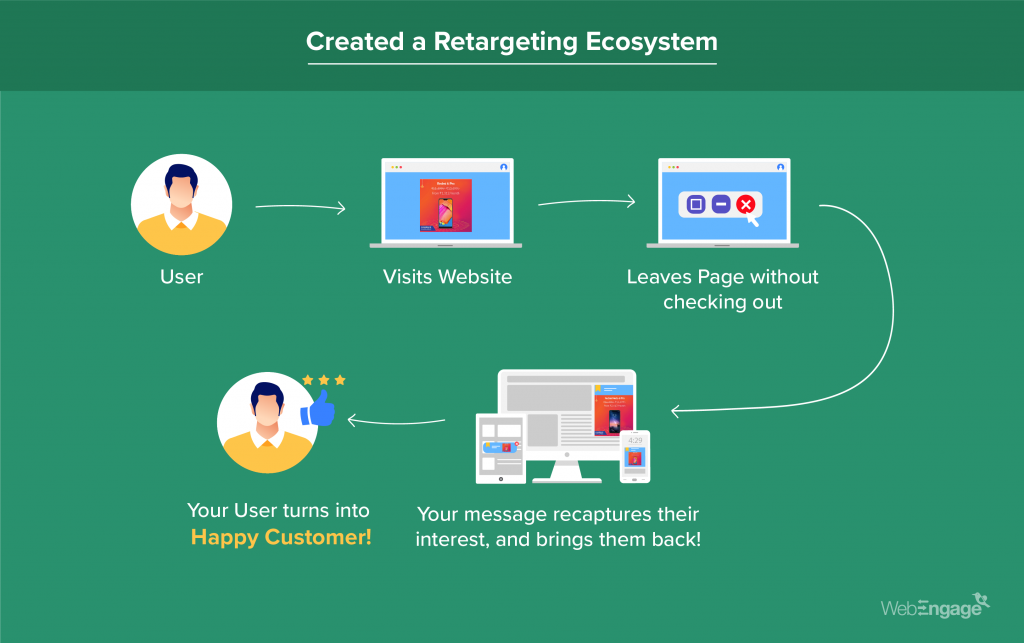
Step #4: Inserted the right plugs
As >90% of the SEO/SEM users were anonymous, BFES could not target them with the usual email or SMS marketing. Instead, WebEngage suggested BFES go ahead with:
- Web push messages
- Website notifications
Web Push Messages:
Through this channel, BFES reached out to their anonymous users (desktop or mobile). Even when they were not present on the website. All users who had opted-in to receive web push notifications through the website and had not blocked web push notifications were considered reachable through web push.
BFES conducted experiments to encourage newly acquired users to come back to the website, browse and complete a purchase.
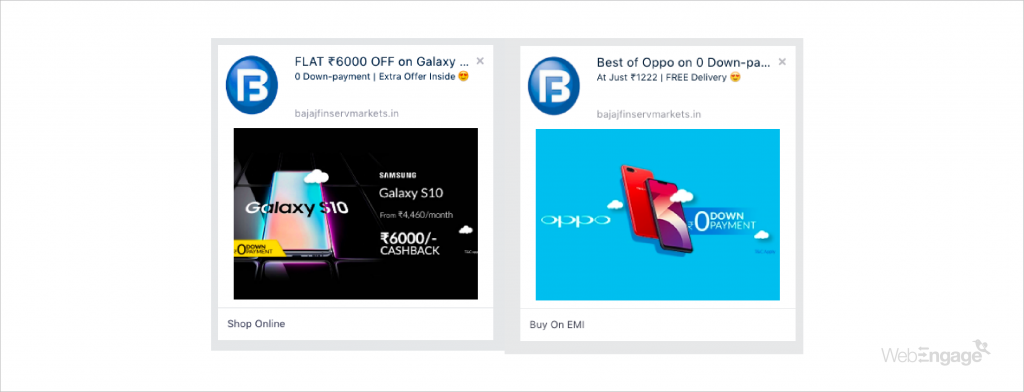
Initially, they started out with bulk campaigns to all SEO/SEM users but gradually shifted focus to specific subsets of users for better efficiency.
The key to doing this was through customer segmentation. User’s browsing history, interest, reachability, level of activity were taken into account to sharpen the targeting. BFES gave special attention to filter users by their city names before sending the message. Such checks were crucial for maintaining a balanced supply-demand of goods in their hyper-local set-up.
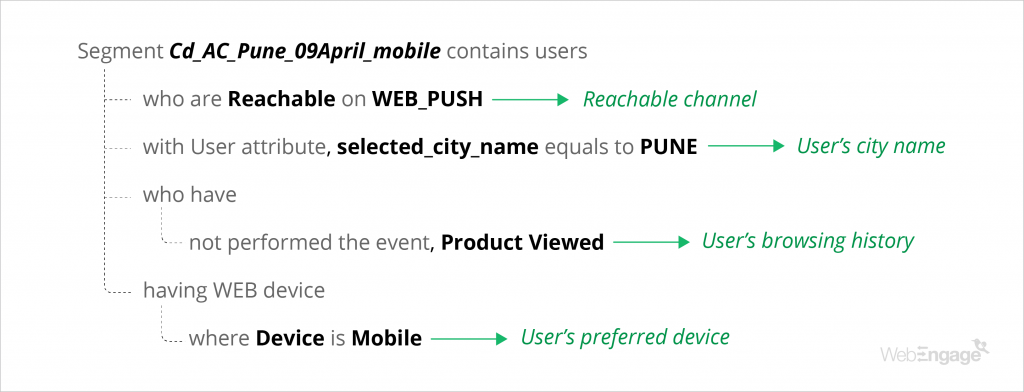
A series of rich notifications were then used to offer unique experiences to each target segment.
Also read: WebEngage’s Report on the State of Web Push Notifications
Website Notifications:
All users who had interacted with their website, desktop or mobile, over the last 30 days were considered reachable through website notifications.
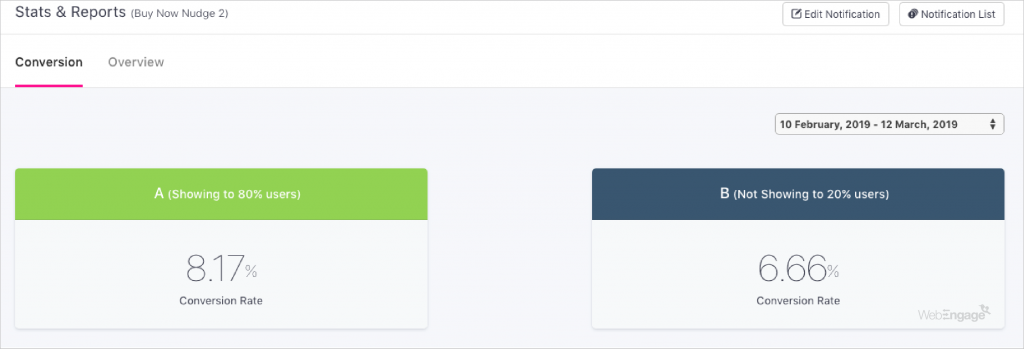
Through WebEngage’s Send Winner of A/B Testing Automatically feature, BFES tested different variations of their campaigns before automatically sending the winning variation to the larger audience. The ability to implement A/B test insights in real-time led to more effective campaigns that drove significant revenues.
Step #5: Measured Conversion Boost
The retargeting campaigns gave outstanding results. Over the last six months, more than 1 million unique users who had dropped-off after their first website visit, clicked on the web push and re-entered the funnel.
Out of these, 25% of users went to the checkout page immediately. while 3% went back to browse the product catalog within 24 hours, proving the effectiveness of timely messages.
BFES team found the flexibility of WebEngage’s funnel feature to be a huge help in assessing their marketing communication. The ability to control how much time it took to get through the funnel and choose between system and custom event attributes at each funnel step enabled them to compare between different acquisition sources easily.
Find Out How Funnels Can Fuel Your Business
Furthermore, it was now possible for everyone in the marketing team to explore user behavior on the WebEngage dashboard and find answers to their questions. This cut down any analyst bottleneck and enabled faster testing and execution cycles.
WebEngage’s retargeting campaigns rendered a 25-28% uplift in user engagement (clicks to pages browsed/product viewed). The sharpened targeting by BFES, further led to the number of transactions soaring over time, even with a steady outflux of web push messages.
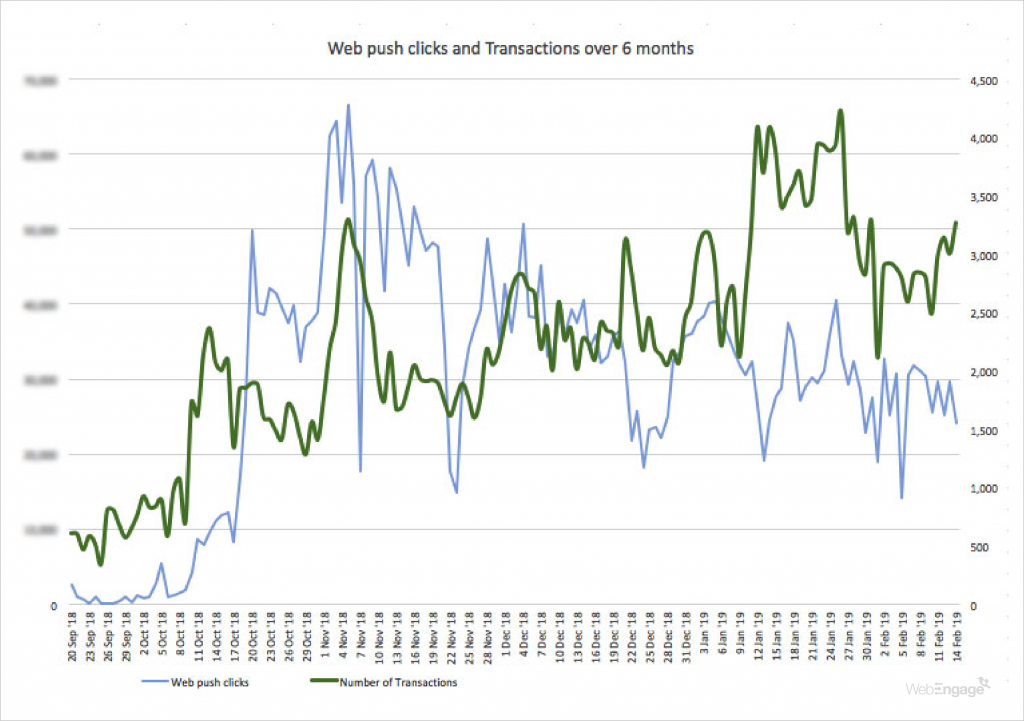
As of today, retargeting communication from WebEngage contributes to 17% of the overall transactions made on the website. True story.
Results
Here’s a quick summary of BFES’ user engagement performance since integrating with WebEngage:
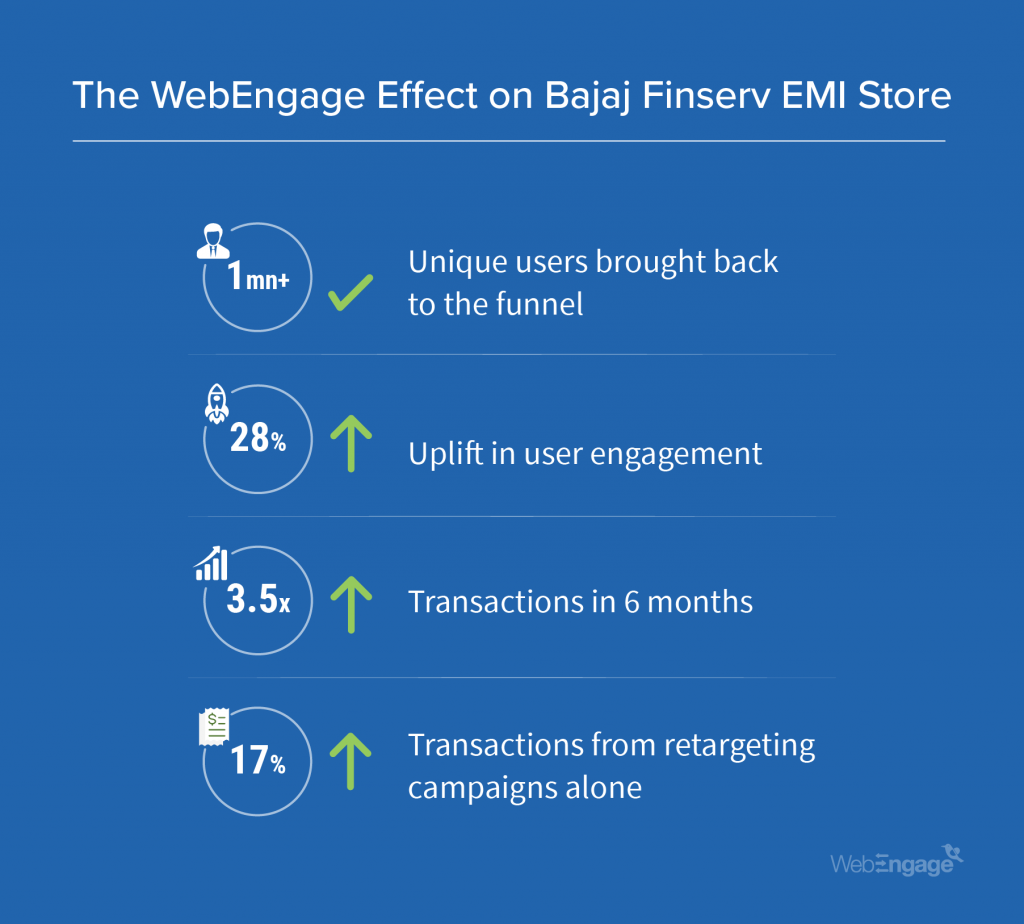
Final Thought
Retargeting is one of the most cost-effective ways to overcome high drop-offs. Strategies involving content marketing, AdWords, and SEO are great for driving traffic, but they don’t help with conversion optimization. Conversely, retargeting can help increase conversions, but it can’t solely drive people to the website. BFES found success because while they drove traffic, they tailored their retargeting strategy to precisely match the requirements of different sections of the traffic.
Why WebEngage?
- Ease of use
- Unified user profiles
- Anonymous user engagement
- Flexible funnel feature
- Easy revenue attribution








